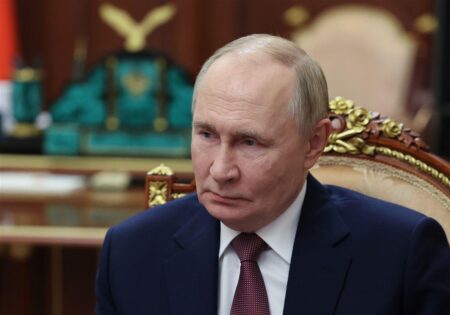Germany’s Pivotal Move Amid the Ukraine-Russia Conflict
Germany’s recent authorization to supply advanced weaponry enabling Ukrainian forces to strike targets within Russian borders represents a profound transformation in Berlin’s policy toward the ongoing war. This decision, reported by Time Magazine, breaks from Germany’s traditionally cautious approach and signals a readiness to take more assertive action in support of Kyiv. As the conflict drags into its second year with no clear resolution, this shift reflects mounting frustration over Moscow’s continued aggression and an intent to increase pressure on Russia through enhanced military means.
This strategic endorsement not only empowers Ukraine militarily but also introduces new complexities for European security and diplomatic relations.
- Escalation of hostilities: Permitting strikes inside Russia could provoke retaliatory measures from Moscow, potentially broadening the battlefield.
- Reconfiguration of alliances: Germany’s stance may accelerate NATO’s transition toward a more confrontational posture against Russia.
- Economic repercussions: Heightened instability threatens Europe’s energy infrastructure and supply chains already vulnerable due to sanctions on Russia.
| Dimension | Expected Outcome | Projected Timeline | ||||||||||||
|---|---|---|---|---|---|---|---|---|---|---|---|---|---|---|
| Military | Increased cross-border engagements and counterstrikes | Immediate to short term (weeks-months) | ||||||||||||
| Diplomatic < td style = " border : 1 px solid# ccc ;padding : 8 px ; " > NATO alliance strategy adjustment towards deterrence escalation< / td > < td style = " border : 1 px solid# ccc ;padding : 8 px ; " > Medium term (3-6 months)< / td > < / tr > <
tr > < tbody >< / table > < h2 id = "european-security-repercussions-of-germanys-decision" > European Security Repercussions of Germany’s Decision< / h2 > < section class = "post-section" > Berlin’s unprecedented move marks a turning point in Europe’s defense landscape. By endorsing Ukrainian strikes beyond its borders, Germany is signaling an increased willingness among NATO members to engage more directly rather than limit themselves to indirect support such as humanitarian aid or defensive arms shipments. This recalibration challenges decades-old deterrence frameworks that have maintained relative stability since the Cold War era. Several European nations have voiced varied reactions reflecting their unique geopolitical concerns: – Poland has openly welcomed Berlin’s decision, emphasizing urgent reinforcement along its eastern frontier amid fears of spillover violence. – France remains cautiously optimistic but stresses diplomatic efforts must continue alongside military support. – Hungary opposes any escalation that risks broader conflict expansion. – Italy maintains neutrality with focus on humanitarian assistance rather than military involvement. These divergent stances underscore Europe’s fragmented approach as it grapples with balancing solidarity for Ukraine against fears of provoking wider confrontation. Key consequences include: – Accelerated integration within EU and NATO defense mechanisms aimed at rapid response capabilities – Enhanced intelligence sharing focused on early warning systems for potential Russian reprisals – Increased investment commitments targeting cyber defenses and airspace security
Diplomatic Balancing Act Amid Rising Military Cooperation
The German government faces intricate diplomatic hurdles following its approval allowing Ukraine offensive capabilities inside Russian territory. While this move strengthens Kyiv’s position militarily, it simultaneously raises alarms among some allies concerned about triggering uncontrollable escalation or fracturing alliance unity. The core challenges revolve around maintaining cohesion within NATO despite varying threat perceptions across member states while managing global narratives framing this assistance strictly as defensive support rather than aggressive provocation.
— Mediating between hawkish factions advocating stronger retaliation versus those urging restraint. —
—
The table above outlines key actors’ priorities amid these evolving dynamics-highlighting how each navigates competing pressures between supporting Ukrainian sovereignty and avoiding broader destabilization risks. As tensions persistently escalate across Eastern Europe, Berlin’s recent endorsement allowing Kyiv offensive operations inside Russian territory marks a watershed moment redefining Europe’s role in this protracted war. The ramifications extend far beyond immediate battlefield outcomes – influencing alliance cohesion, regional security architectures, economic stability related especially to energy markets already strained by sanctions totaling over $400 billion globally since early stages of conflict (source:IHS Markit Report June ’24), and diplomatic efforts seeking peaceful resolution. Observers worldwide will be closely watching how this bold step reshapes power balances – whether it accelerates momentum towards ending hostilities or inadvertently deepens divisions risking prolonged instability. Ultimately,This development underscores both the urgency felt by European leaders frustrated by stalemate conditions-and their willingness now-to embrace riskier strategies aimed at compelling Moscow towards negotiation through sustained pressure. |




